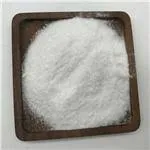Nonionic Polyacrylamide Structure, Properties, and Applications
Nonionic polyacrylamide (NIPAM) is a synthetic polymer derived from acrylamide, a common monomer that has garnered significant attention in various fields due to its unique properties and versatility. Polyacrylamide can be classified into different categories based on the types of functional groups attached to it. Nonionic polyacrylamide, as the name suggests, lacks the ionic groups that characterize other types of polyacrylamide, such as anionic or cationic variants. This article delves into the structure, properties, and applications of nonionic polyacrylamide, highlighting its importance in industrial and environmental contexts.
Structure and Synthesis
Nonionic polyacrylamide is synthesized through the polymerization of acrylamide monomers, where initiators are utilized to start the polymerization process. The absence of ionic groups in nonionic polyacrylamide means that its solubility and properties are primarily influenced by the polymer's molecular weight and the degree of cross-linking. Adjustments in these parameters can lead to a wide range of viscosity levels and stable gel formations, making nonionic polyacrylamide suitable for various applications.
The general structure of nonionic polyacrylamide consists of a long chain of repeating acrylamide units, which can be further modified to engineer specific properties. Additionally, this polymer can be cross-linked with agents such as N,N’-methylenebisacrylamide, forming a three-dimensional network that enhances its mechanical strength and stability.
Properties
One of the outstanding features of nonionic polyacrylamide is its high water retention capacity, which is a crucial characteristic that determines its applicability in various environments. This polymer can absorb significant amounts of water without dissolving, making it a valuable agent in soil management, water conservation, and agriculture.
Another important property of nonionic polyacrylamide is its chemical stability and resistance to environmental factors such as temperature and pH changes. Unlike ionic polyacrylamide, which can easily interact with ions in the environment, nonionic variants maintain stability under various conditions. Moreover, the polymer exhibits excellent flocculation properties, allowing it to facilitate the aggregation of suspended particles in liquids, an advantageous trait in water treatment processes.
Applications
nonionic polyacrylamide

The versatile properties of nonionic polyacrylamide have led to its widespread use in numerous applications across several industries.
1. Water Treatment One of the primary uses of nonionic polyacrylamide is in wastewater treatment and purification processes. Its flocculating ability helps to remove suspended solids from water, enhancing the efficiency of purification processes and ensuring compliance with environmental regulations.
2. Soil Conditioning In agricultural practices, nonionic polyacrylamide is employed as a soil conditioner to improve water retention and reduce erosion. Its water-absorbing properties create a more favorable environment for plant growth, especially in arid regions.
3. Oil Recovery The oil industry also utilizes nonionic polyacrylamide as part of enhanced oil recovery techniques. By injecting nonionic polyacrylamide solutions into oil reservoirs, the mobility of the oil can be increased, facilitating its extraction.
4. Cosmetics and Personal Care The cosmetic industry benefits from nonionic polyacrylamide due to its thickening and stabilizing properties. It is commonly used in lotions, creams, and gels to improve texture and consistency while enhancing the product's overall performance.
5. Paper and Textile Industries In the manufacturing of paper and textiles, nonionic polyacrylamide acts as a retention aid and a sizing agent, improving the mechanical properties of the final products.
Conclusion
Nonionic polyacrylamide is an essential polymer with diverse applications across multiple sectors. Its unique properties, such as high water retention capacity, chemical stability, and excellent flocculation abilities, make it a valuable tool in water treatment, agriculture, oil recovery, and more. As research and technology continue to advance, the potential applications of nonionic polyacrylamide are likely to expand, reinforcing its role as a critical material in industrial and environmental processes.

